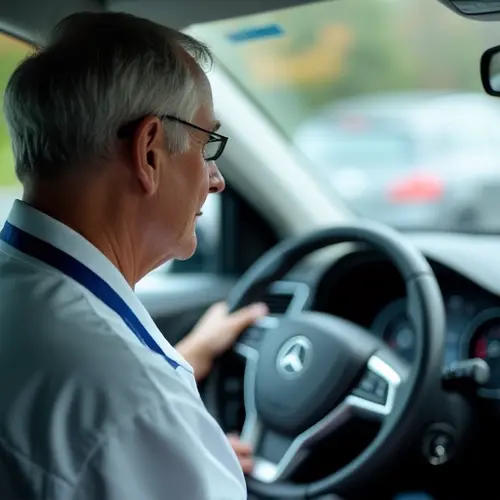EU adopts major driving license reform including digital licenses, cross-border penalties for serious offenses, stricter training for new drivers, and expanded accompanied driving to reduce nearly 20,000 annual road fatalities.

Major EU Driving License Reform Targets Road Safety Crisis
The European Union has approved sweeping changes to driving license regulations in a bold attempt to reduce the nearly 20,000 annual road fatalities across the bloc. The comprehensive reform package, adopted by EU lawmakers in October 2025, introduces digital licenses, cross-border penalties for serious offenses, and stricter requirements for both new and experienced drivers.
Addressing the Road Safety Emergency
With 19,940 people losing their lives in road crashes in 2024 according to European Commission figures, the EU is pushing forward with its ambitious 'Vision Zero' goal - eliminating all road fatalities and serious injuries by 2050. 'The reform is necessary because the world has changed,' German MEP Jutta Paulus told the European Newsroom. 'We must come down from 20,000 deaths in traffic per year and this reform is part of the package.'
Key Changes for All Drivers
The most significant innovation is the introduction of EU-wide driving bans for serious traffic offenses like drink-driving and extreme speeding. Currently, nearly 40% of drivers who have their license revoked in another EU country escape punishment, according to Italian MEP Matteo Ricci. However, German MEP Markus Ferber clarified that 'cross-border licence disqualifications will not apply to vacationers who receive a minor fine due to ignorance of local regulations.'
The reform also establishes a maximum validity period of 15 years for car and motorcycle licenses, though this can be reduced to 10 years in countries where the driving license serves as an identity document. Contrary to earlier discussions, there will be no mandatory health checkups for older drivers, with Polish MEP Elżbieta Łukacijewska noting that 'member states retain full flexibility in assessing fitness to drive.'
New Requirements for Learner Drivers
Prospective drivers will face updated training requirements focusing on modern road safety challenges. Driving courses will now emphasize distraction caused by mobile phone use, blind spots, driver assistance systems, and interactions with vulnerable road users like pedestrians and cyclists.
Young drivers will be subject to a two-year probationary period with stricter penalties for violations. The reform also expands accompanied driving across the EU, allowing 17-year-olds to drive with supervision from experienced adults. To address labor shortages in the transport sector, the minimum age for truck drivers drops from 21 to 18, while bus drivers can now obtain licenses at 21 instead of 24.
Digital Transformation and Implementation
The legislation accelerates the transition to digital driving licenses, which will become accessible through mobile phones while maintaining the option for physical documents. According to European Parliament documentation, the digital license will be integrated into the European Digital Identity Wallet.
Implementation timelines vary across member states. Germany's Technical Inspection Association (TÜV) warned that 'there is still a lot of work to be done' to digitize driving licenses due to different software systems used by state authorities. Meanwhile, Bulgaria's Deputy Prime Minister Grozdan Karadjov stated his country is ready to introduce digital driver's licenses, with the Ministry of e-Government already developing such a system.
National Variations and Safety Disparities
Road safety progress remains uneven across the EU. Sweden maintains the safest roads with 20 deaths per million inhabitants, followed by Malta (21/million) and Denmark (24/million). At the other extreme, Romania (78/million) and Bulgaria (74/million) reported the highest fatality rates in 2024.
Poland achieved the largest improvement since 2019 with a 35% decline in road deaths, while Slovenia reported concerning increases in serious road injuries despite having relatively safe roads overall. The Netherlands, with its extensive cycling culture, faces particular challenges as cyclists account for 39% of all traffic fatalities.
Member states have three years to incorporate the new rules into national legislation, with full implementation expected by 2029. This represents the EU's most comprehensive driving license reform in decades, aiming to bridge the safety gap between member states while moving toward the ultimate goal of zero road deaths.

 Nederlands
Nederlands
 English
English
 Deutsch
Deutsch
 Français
Français
 Español
Español
 Português
Português









